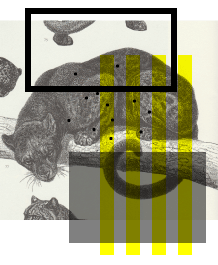Contemplating User-Centered Design
Contemplating User-Centered Design
an excerpt from "Development of User Experience Heuristics to Improve Digital Browse Processes"
In this project User-centered design (UCD) theory has been investigated to understand better the connection between a customer's requirement and how digital environments can meet those demands.
User-centered design is the idea that an individual or organization makes a product specifically with the goals and needs of the user at the forefront of product development.
Although it would seem that most companies would employ this technique, many do not for several reasons. Sometimes it's cost prohibitive. Sometimes it takes too much time. Sometimes they aren't even aware that it's a possibility. Typically it's some combination of at least two of those factors. Some organization, like most political campaigns, live and die based on UCD and user feedback. They need to know what their target audience wants to better craft copy and content that will resonate most with voters. Then on the opposite end of the spectrum, there are wildly successful companies like Apple that historically have not applied user-centered design (yet, oddly, has the reputation of being the most user-friendly personal computer). Apple is looking to innovate in ways customers have often never considered, and end-customer involvement in the design process could significantly alter product outcomes. Digital Web interviewed Peter Merholz and Nathan Shedroff, leaders in the field of user-centered design. Merholz describes that
"the primary problem of user-centered design is that people engage in it at the expense of all else. Often times, what is most useful, usable, and meaningful to the end user is untenable from a business perspective, and the products while maybe popular is a financial failure. Additionally, UCD can often get bogged down in process and need to verify every design choice with users unnecessarily encumbering the process" (Evans).
Consider the rise of Google, Amazon and craigslist. All three of these companies seem to embody UCD resulting in websites that are often text-heavy and frequently difficult to navigate but customers love. They have invested resources in understanding what customers need and crafting experiences that only do that (and to varying degrees offer little content that presents brand differentiation). This approach has resulted in a glut of sites with experiences barely distinguishable from one another. For large brands (like Google and Amazon) this isn't really a problem however for small companies, this may end in a lack of customer retention (why should someone come back to your site if they can't even remember it?).
Navigating the balance of when to rely on user input or feedback and when to forge ahead based on instinct will play a vital role in this project. Customers are great at describing what they don't like, pretty good at identifying what they do and fairly horrible at envisioning systems entirely outside their prior experience. While the solutions here absolutely place the customer at the center of a successful outcome, they may play less of a role in helping to shape the initial solutions. That naturally leads to one of the most challenging questions for this project: what defines a "successful outcome"?
Download "An interview with Peter Merholz and Nathan Shedroff on User-Centered Design" here. I saved a copy just in case the Wayback Machine disappears. Thank you, Wayback Machine!

